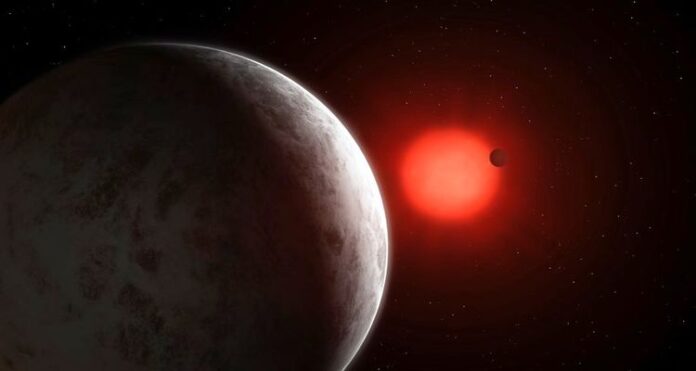| Translate This News In |
|---|
According to a report, astronomers have recently discovered 2 new exoplanets circling a star 100 light years from Earth. The two brand-new exoplanets orbit the dwarf star every 2.7 Earth days and are known as Super-Earths since they are around 30% larger than Earth. The first planet is known as LP 890-9b, while the second is known as LP 890-9c. The orbit of the second planet, which is just 8.5 Earth days long and 40% larger than Earth, is completed in that time. The second planet is present in the host star’s habitable zone, according to astronomers.
The research was printed in the Astronomy & Astrophysics journal. The Transiting Exoplanet Survey Satellite (TESS), operated by the American space agency NASA, classified the celestial objects as exoplanets. Laetitia Delrez, an exoplanetary scientist at the University of Liege in Belgium and the lead author of a paper describing the discovery, said that TESS searches for exoplanets using the transit method by simultaneously monitoring the brightness of thousands of stars and looking for slight dimmings that might be caused by planets passing in front of their stars. To confirm that the observed candidates are planets and to improve the measurements of their sizes and orbital characteristics, a follow-up with ground-based telescopes is frequently essential.
According to a Sciencealert report, the star and its exoplanets are among the nearest multi-world systems to Earth, but the worlds are not expected to be livable given our present understanding of life. Both planets in this system are thought to be among the best targets for atmosphere research due to the brightness of their stars, according to astronomer Michelle Kunimoto of MIT’s Kavli Institute for Astrophysics and Space Research.
The astronomer also questioned whether these planets’ atmospheres are volatile-rich or if there are any indications of water or carbon-based life.


















